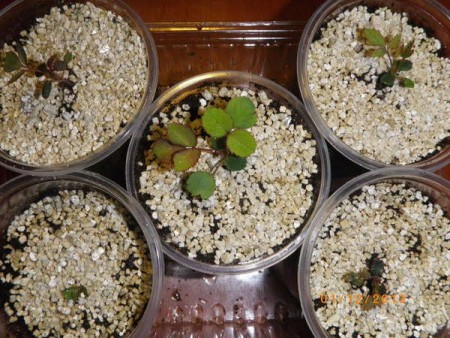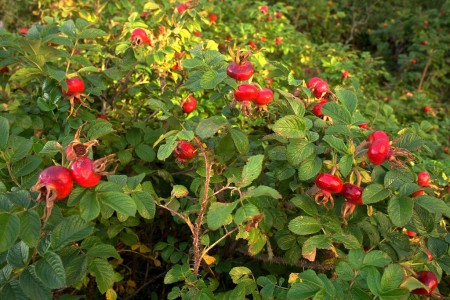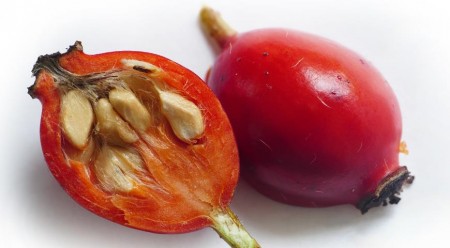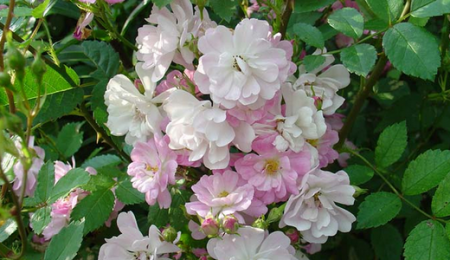This article will discuss how you can grow roses from seeds at home.
- What types of roses can be grown from seeds.
- Where to get seeds.
- Storing, stratifying and sowing rose seeds at home.
- How to care for seedlings.
- Planting rose seeds in the garden.
Growing roses from seeds is a slow process and requires patience. In what cases do you resort to this method of propagating roses?
- Well, firstly, you can get a sufficient number of seedlings at low material costs.
- And secondly, if you like to experiment and want to grow your own “special” roses.
What types of roses can be grown from seeds?
Not all varieties of roses produce full-fledged seed material from which flowers will grow that have the characteristics of the variety of the mother plant. Varieties of rose hips reproduce well by seeds: needle rose, cinnamon rose, wrinkled rose, canina rose.
They are most often grown for use as a rootstock. Polyantha, miniature and Chinese roses can also be grown from seeds at home.
But hybrid forms of roses cannot be propagated in this way. The resulting plant will not resemble the rose from which the seed was obtained.
Where to get seeds for planting
You can buy rose seeds at a flower shop or collect them yourself. Of course, today a wide selection of seeds is offered in online stores. Unfortunately, the same beautiful specimens as in the photo from the packaging do not always grow from purchased seed material. In addition, purchased seeds may be of low quality.
Many gardeners prefer to collect the seeds themselves. The best time to collect is the second half of summer. The fruits are cut slightly unripe, when the seed shell has not yet hardened. These seeds germinate very well.
The fruits are cut with a knife and the seeds are separated from the pulp, then washed and disinfected in a 3% solution of hydrogen peroxide for 20 minutes. A solution of potassium permanganate is also suitable for this purpose.
Storing, stratifying and sowing rose seeds at home
For storage, seed material is sprinkled with washed river sand.The containers are placed in the refrigerator or in the basement. The optimal storage temperature is 3-4 degrees.
An important stage in growing roses from seeds is the stratification of the seed material. Under natural conditions, fallen seeds overwinter in the soil under snow cover. By the beginning of spring, the dense shell softens, the seed swells and germinates with the arrival of warmth.
Stratification – this is the creation of such conditions artificially. The seed material is moistened and kept at a temperature of 2-5 degrees for 2 months.
Before stratification, it is advisable to treat the seed material with growth stimulants to improve seed germination. Kornevin, epin, heteroauxin, etc. are suitable.
1 way of stratification:
Rose seeds are wrapped in any moisture-retaining material (cotton pads, several layers of cloth), moistened and placed in a plastic container or plastic bag.
You need to keep the seeds in the refrigerator or other cold place, periodically checking for mold. If mold is detected, remove damaged seeds, wash the rest, disinfect and continue stratification.
As soon as the sprouts emerge, the seeds need to be planted in the ground. It is convenient to use peat tablets or small plastic containers for planting. There is no need to bury the seeds; you can just press them lightly into the soil and sprinkle them with a layer of perlite or vermiculite of a few millimeters. Cover the crops with film and place in a warm place until sprouts appear.
2nd method of stratification:
Rose seeds treated with growth stimulants are sown immediately in small containers with soil. The soil should be light and breathable. For this purpose, you can add vermiculite up to 1/3 of the volume.Treat the soil with phytosporin or other biofungicide. The top is also sprinkled with vermiculite or sand and covered with plastic film.
Two weeks after sowing, the containers are put into the refrigerator for stratification. The crops need to be checked periodically and moistened if necessary. Stratification lasts 2 months. It is important not to miss the moment when sprouts appear.
Seeds of polyanthus and miniature roses must be stratified using one of the methods described above. To grow strong seedlings by May, start in December-January.
But the popular rose “Angels’ Wings” can be grown bypassing the stratification stage by planting the seeds directly into the ground in February. Place the seeds treated with a growth stimulator on the surface of the soil in small containers or peat tablets. Sprinkle the crops with vermiculite, cover and place in a warm place.
Shoots usually emerge within two weeks. If sprouts do not appear, refrigerate for two weeks. Such short-term stratification sometimes helps, and long-awaited sprouts appear. It is imperative to check the crops more often so as not to miss the time of sprouting.
Seedling care
Light mode. As soon as the rose sprouts begin to emerge, the container is exposed to light, but direct sunlight must be avoided. To prevent the plants from stretching, organize additional lighting for up to 10-12 hours a day and the optimal temperature is not higher than 20 degrees.
Prevention of diseases. To prevent the soil from turning sour, you can very carefully loosen the top layer. To prevent fungal diseases, it is good to use biological preparations: phytosporin, gliocladin, phytolavin, etc.
Picking seedlings. When 3-4 true leaves appear, pick the seedlings. First, spill the soil with water to form a ball of earth around the roots. You need to transfer the seedlings along with a lump of earth into the prepared pots and carefully add soil without squeezing them around the roots. Water a little and add more soil. By doing this you will avoid damaging the thin, delicate roots of the rose.
Ordinary seedling care: good lighting, moderate watering, fertilizing. Cut the first buds that appear shorter. Then the root system will develop better and side shoots will appear.
In mid-May, young bushes can be planted in a permanent place in the garden.
Planting rose seeds in the garden
You can also grow a rose from seeds using the seedless method, sowing the seeds directly into the ground in the fall.
When planting in the garden in autumn, preliminary stratification of seeds is not required. These processes will occur naturally in winter under snow cover.
The bed needs to be prepared before frost sets in. Dig up the soil, add compost, peat and make furrows 1.5 cm deep. Seed material can be treated with a growth stimulator before sowing. Sow at a distance of 10 cm from each other.
Mulch the crops with peat. In case of a winter with little snow, the bed can be covered. Covering cloth, hay, leaves are suitable. In April, remove the covering material and wait for germination. To retain moisture in the top layer of soil, it is better to mulch the bed. Peat, humus, and compost are suitable as mulch.
To protect seedlings from spring frosts, you can organize a film shelter in the form of a small greenhouse. Further care for seedlings is usual: fertilizing, watering, measures to prevent fungal diseases, protection from pests.
Interesting video about growing roses from seeds:








 CUCUMBERS NEVER GET SICK, I'VE BEEN USING ONLY THIS FOR 40 YEARS! I SHARE A SECRET WITH YOU, CUCUMBERS ARE LIKE THE PICTURE!
CUCUMBERS NEVER GET SICK, I'VE BEEN USING ONLY THIS FOR 40 YEARS! I SHARE A SECRET WITH YOU, CUCUMBERS ARE LIKE THE PICTURE! You can dig a bucket of potatoes from each bush. Do you think these are fairy tales? Watch the video
You can dig a bucket of potatoes from each bush. Do you think these are fairy tales? Watch the video
 How our fellow gardeners work in Korea. There is a lot to learn and just fun to watch.
How our fellow gardeners work in Korea. There is a lot to learn and just fun to watch. Eye trainer. The author claims that with daily viewing, vision is restored. They don't charge money for views.
Eye trainer. The author claims that with daily viewing, vision is restored. They don't charge money for views. A 3-ingredient cake recipe in 30 minutes is better than Napoleon. Simple and very tasty.
A 3-ingredient cake recipe in 30 minutes is better than Napoleon. Simple and very tasty. Therapeutic exercises for cervical osteochondrosis. A complete set of exercises.
Therapeutic exercises for cervical osteochondrosis. A complete set of exercises. Which indoor plants match your zodiac sign?
Which indoor plants match your zodiac sign? What about them? Excursion to German dachas.
What about them? Excursion to German dachas.